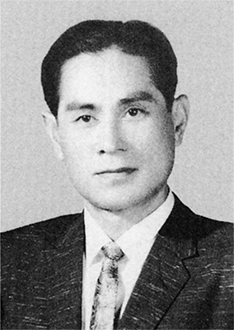The Messiah comes as the True Parent of humanity because only he can remove the original sin by giving rebirth to humanity, born of fallen parents (cf. Christology 4.1.1). For fallen people to be restored to their original state, we must receive the Messiah. Before we can receive the Messiah, however, we must first establish the foundation for the Messiah.
What indemnity conditions are required for establishing the foundation for the Messiah?
To answer this question, we must first understand how Adam was to have realized the purpose of creation and how he failed to do it, because the condition of indemnity is made by reversing the course of the deviation from the original path.
For Adam to realize the purpose of creation, he was supposed to fulfill two conditions. First, Adam should have established the foundation of faith. The person to lay this foundation was Adam himself.
The condition to establish this foundation was to keep strictly to God’s commandment not to eat of the fruit of the tree of the knowledge of good and evil. In fulfilling this condition, Adam would have passed through a set growing period, which was the time allotted for him to fulfill his portion of responsibility. This period represents some numbers of providential significance. Hence, the growing period may be thought of as a period to fulfill certain numbers.
The second condition which Adam was supposed to fulfill in order to realize the purpose of creation was to establish the foundation of substance. After Adam established an unshakable foundation of faith, he was then to become one with God, thereby establishing the foundation of substance.
This means he would have become the perfect incarnation of the Word (John 1:14) with perfect character, fulfilling God’s first blessing. In this way, had he not fallen, Adam would have completed the purpose of creation. For a fallen person to establish the foundation for the Messiah, he must pass through a similar course: establishing first the foundation of faith and then the foundation of substance.
The Foundation of Faith
Because Adam disobeyed the Word of God and fell, he could not establish the foundation of faith. Hence, he could neither become the perfect incarnation of the Word nor complete the purpose of creation. To restore the basis upon which they can complete the purpose of creation, fallen people must first restore through indemnity the foundation of faith which the first human ancestors failed to establish. There are three aspects to the indemnity condition required for restoring the foundation of faith.
First, there must be a central figure. From the time Adam failed to establish the foundation of faith, God has been looking for central figures who could restore the lost foundation of faith. God had Cain and Abel offer sacrifices for this purpose. Likewise, God called men such as Noah, Abraham, Isaac, Jacob, Moses, the kings and John the Baptist for the purpose of raising them up as central figures.
Second, an object for the condition must be offered. When Adam lost faith in God, he lost the Word of God which had been given him for the fulfillment of the condition to establish the foundation of faith.
As a result, fallen people could no longer directly receive the Word of God to restore the foundation of faith. It then became necessary to offer objects for the condition as substitutes for the Word. Human beings were degraded by the Fall to a status lower than the things of creation, as it is written, “the heart is deceitful above all things” (Jer. 17:9). Hence, in the age prior to the giving of the Old Testament, people could establish the foundation of faith by offering a sacrifice or its equivalent, such as the ark, procured from the natural world. Thus, the foundation of faith also functioned as the foundation to restore all things, which had been defiled by Satan. In the Old Testament Age, either the Word as revealed in the Law of Moses or representatives of the Word – such as the Ark of the Covenant, the Temple and various central figures – served as objects for the condition, substituting for the original Word. In the New Testament Age, the Word as revealed in the Gospels and Jesus, the incarnation of the Word, were the objects for the condition.
From the standpoint of human beings, these objects for the condition were offered for the purpose of establishing the foundation of faith. From God’s perspective, the offering of objects for the condition would secure God’s ownership of the dispensation.
Third, a numerical period of indemnity must be completed. Questions such as why the length of this indemnity period should be based on certain providential numbers and what lengths those numerical periods have, will be discussed later in detail (cf. Periods 2.4).
The Foundation of Substance
As earlier stated, for fallen people to complete the purpose of creation, we must become perfect incarnations of the Word, a state our first ancestors failed to attain. Becoming perfect incarnations requires that first we be cleansed of the original sin through the Messiah. Before we can receive the Messiah, however, we need to lay a foundation for him, which is accomplished when we establish the foundation of substance on the basis of the foundation of faith.
After receiving the Messiah and being restored to the position of the first human ancestors before their Fall, a path still remains to be trod: we must become one with the Messiah, centered on the Heart of God, then follow him along the uncharted path to the summit of the growing period, and thus finally become perfect incarnations.
Fallen people can establish the foundation of substance by making an indemnity condition, the indemnity condition to remove the fallen nature.When the first human ancestors fell and acquired the original sin, they could not realize their God-given original nature.
Instead, they harbored the primary characteristics of the fallen nature (cf. Fall 4.6). By making the indemnity condition to remove this fallen nature, a fallen person can lay the foundation of substance by which he can receive the Messiah, be cleansed of the original sin, and ultimately restore his original nature. In later chapters, we will discuss how this condition may be fulfilled (cf. Foundation 1.2).




